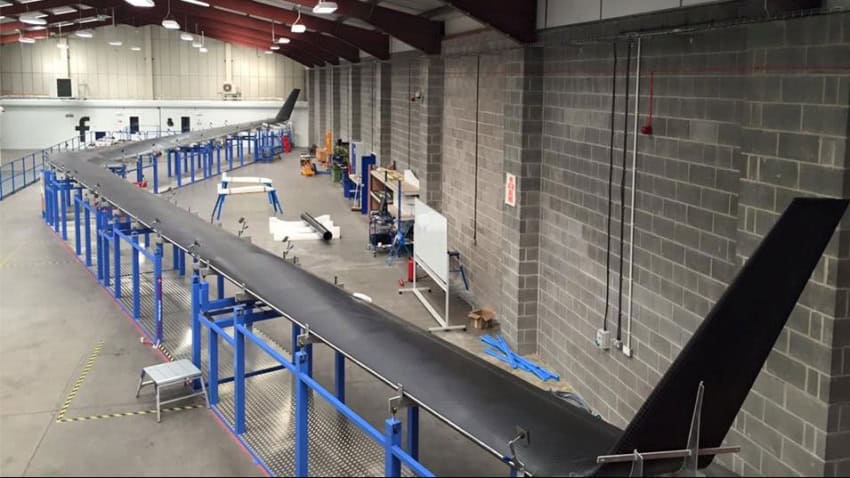MENLO PARK (APP) – Facebook said it is ready to begin test flights of a high-altitude drone designed to provide Internet access to remote locations of the world.
The Aquila drone has a wingspan on par with that of a Boeing 737 jet; weighs less than a small car; can remain aloft for three months or so, and will beam Internet service to the ground from altitudes ranging from 60,000 to 90,000 feet (18,000 to 27,000 meters).
Yael Maguire, the engineering director of the project, told journalists the team had “achieved a significant milestone” with laser communications for high-speed data connections that are faster than most current speeds.
Using the drone could mean “quickly bringing connectivity to an area that needs it,” he said at a presentation at Facebook’s California headquarters.
“Our goal is to accelerate the development of a new set of technologies that can drastically change the economics of deploying Internet infrastructure,” Facebook vice president of global engineering and infrastructure Jay Parikh said in a blog post.
“We are exploring a number of different approaches to this challenge, including aircraft, satellites and terrestrial solutions.”
But he said this would not lead to Facebook becoming an Internet operator or carrier.
“Our goal is to provide the technology to other partners,” he said.
Aquila drones and using lasers to provide Internet connections are the work of a project devoted to finding ways to provide online access to the billions of people in the world who don’t yet have it.
Facebook last year unveiled its ambitious plan to use drone, satellite and laser technology “to deliver the internet to everyone” via the California-based online social network’s Connectivity Lab.
“A full-scale version of Aquila — the high-altitude, long-endurance aircraft designed by our aerospace team in the UK — is now complete and ready for flight testing,” Parikh said.
Data fired off by the lasers can hit a target “the size of a dime from more than 10 miles (16 kilometers) away.”
The lasers are being tested in real-world conditions.
“When finished, our laser communications system can be used to connect our aircraft with each other and with the ground, making it possible to create a stratospheric network that can extend to even the remotest regions of the world,” Parikh said.
He added that these technologies are useful because “10 percent of the world’s population lives in remote locations with no Internet infrastructure,” and it may be costly to deploy conventional systems like cable or cellular communication in these areas.













